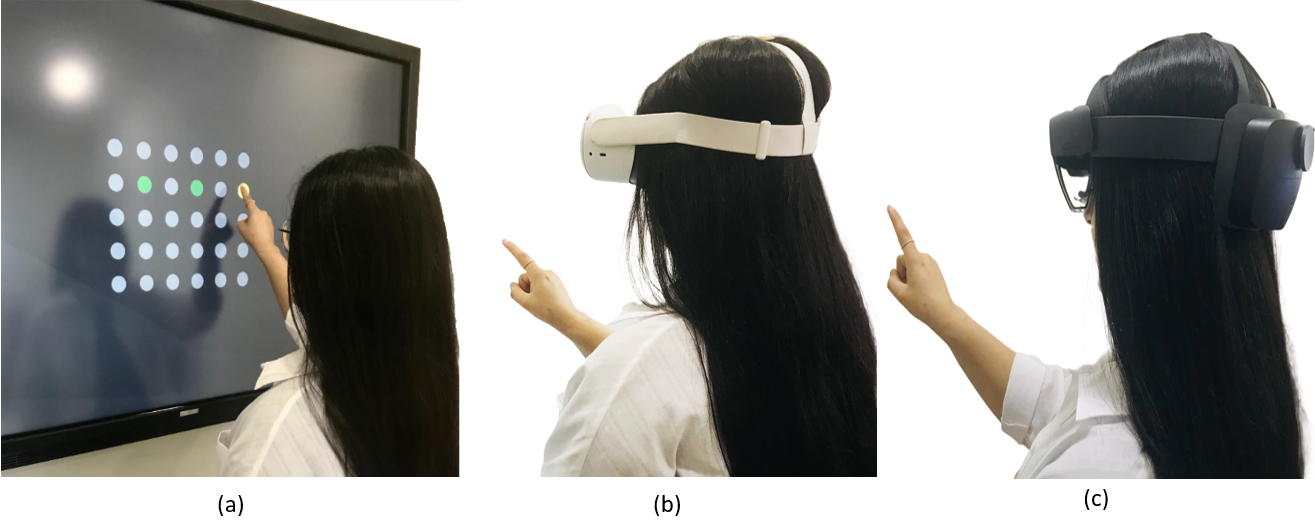
Eye-Hand Coordination Training: A Systematic Comparison of 2D, VR, and AR Screen Technologies and Task Motives Inproceedings
Aliza Rind, Irene Zaugg, Elif Celik, Wolfgang Stuerzlinger, Francisco Ortega, Anil Ufuk Batmaz, Mine Sarac
Abstract:
This study compares Augmented Reality (AR), Virtual Reality (VR), and 2D touchscreen approaches for eye-hand coordination training. We thoroughly analyze the motor performance of twenty participants throughout the course of a ten-session longitudinal study. Our study includes five different assessment criteria: speed, error rate, accuracy, precision, and none. We also analyze the participants' performance in terms of effective throughput as a novel evaluation criterion. The results showed that each task execution strategy has a different effect on one or more psychomotor characteristics of the trainee, which highlights the importance of the training program. We also showed that effective throughput is a candidate for monitoring the overall motor performance progress in eye-hand coordination training systems.
